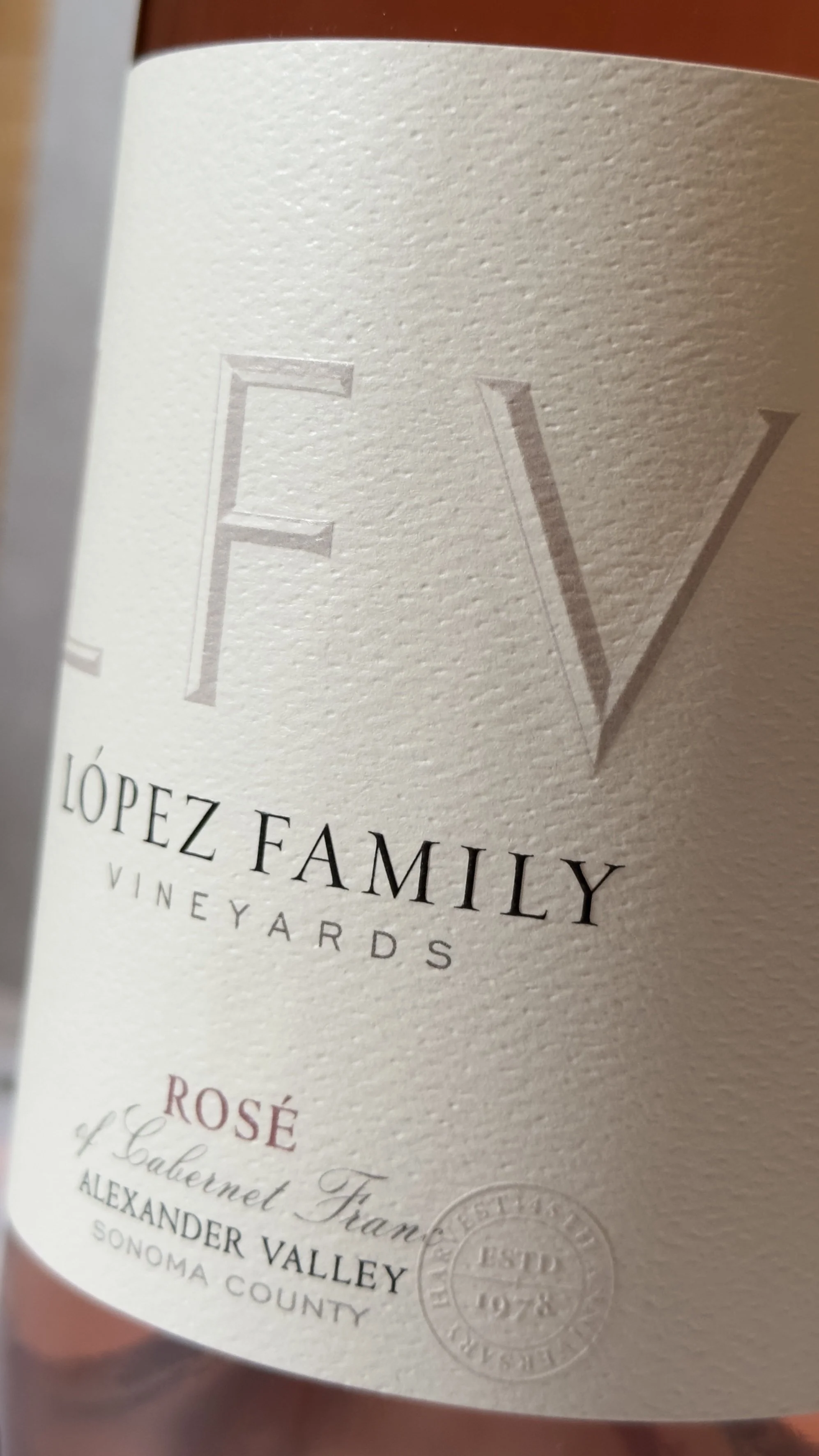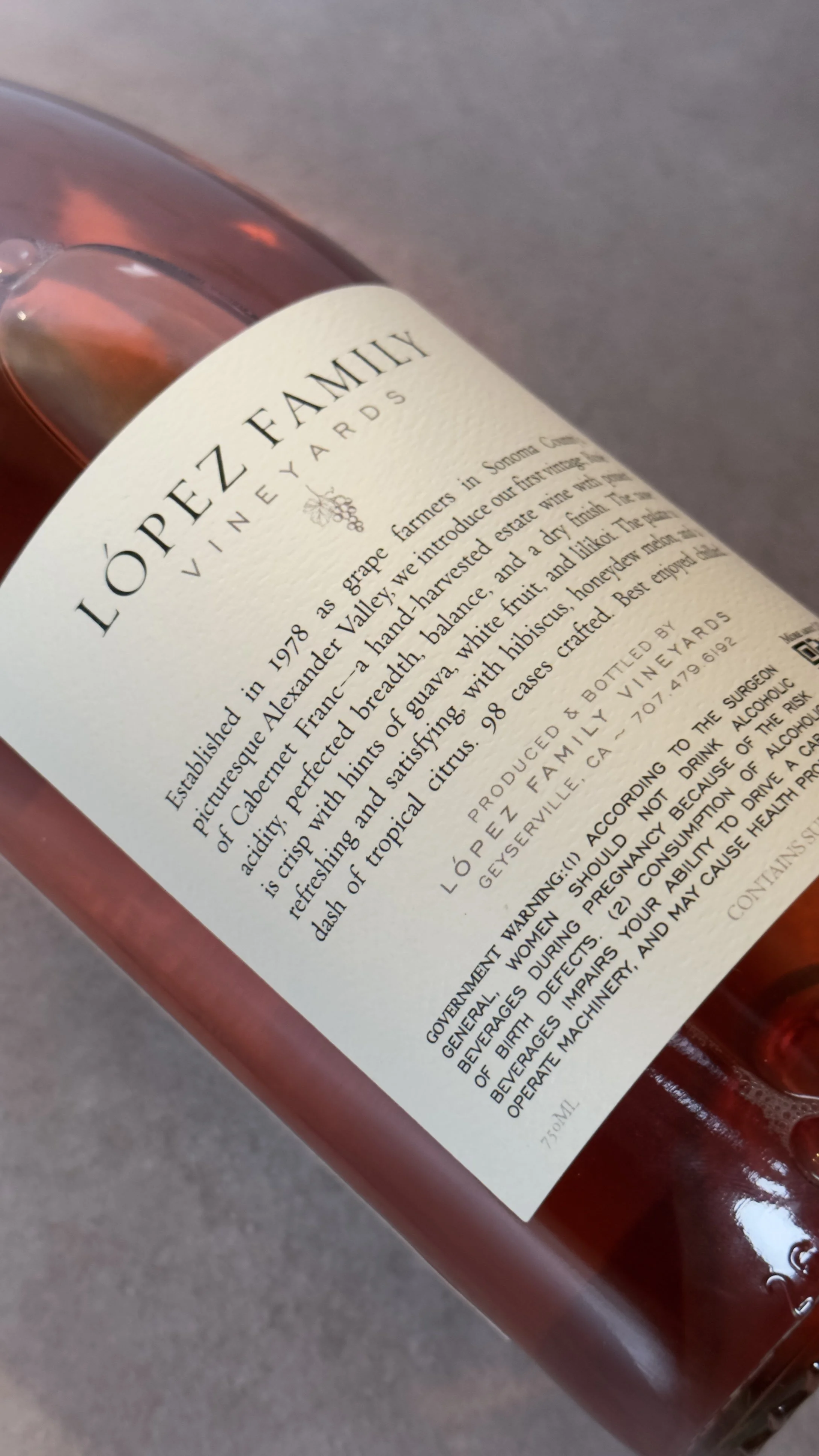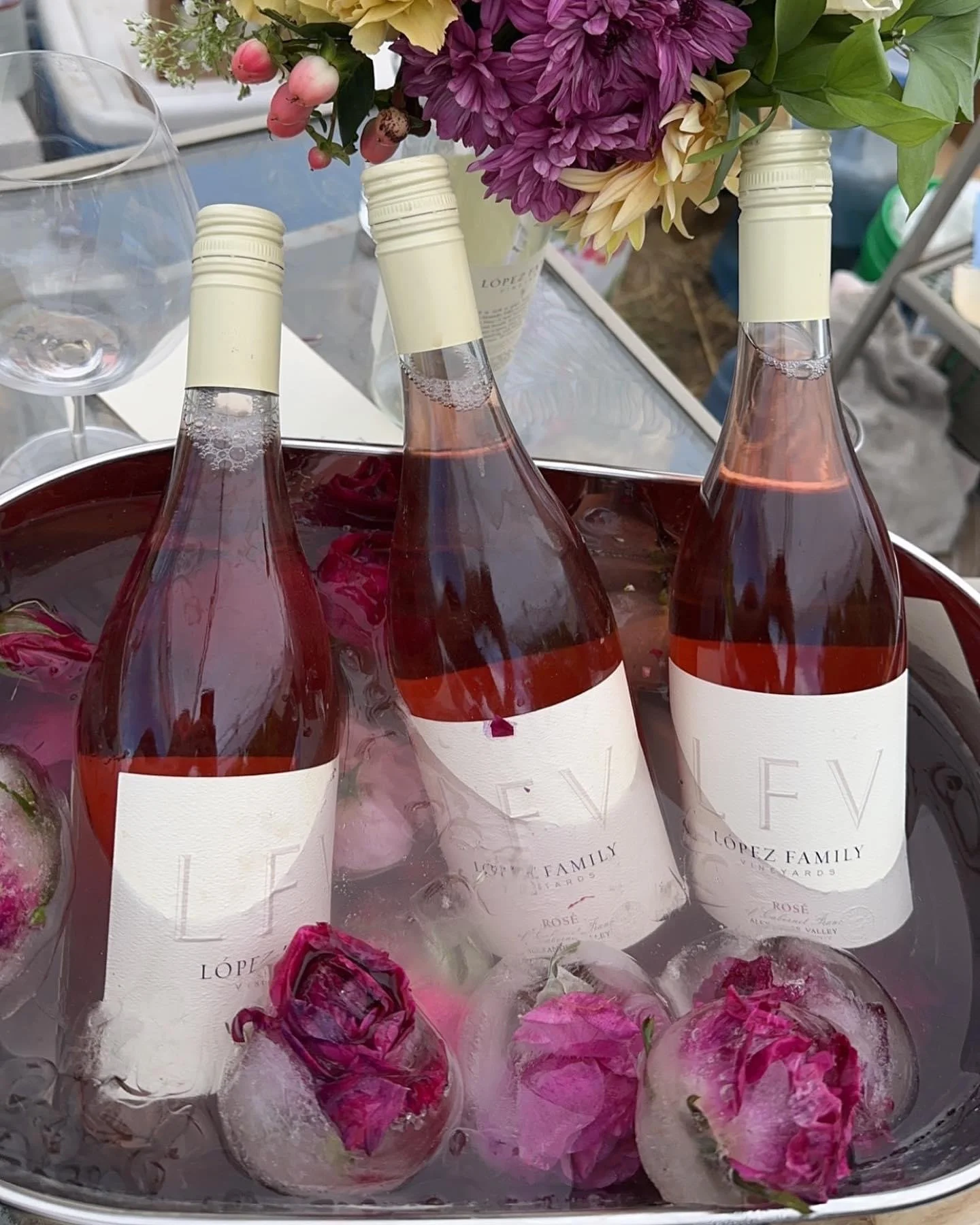INTRODUCING: 2022 Rosé of Cabernet Franc
Our estate inaugural wine coming from Alexander Valley, Sonoma County, CA.
2022 Rosé of Cabernet Franc
Hooray for Rosé
Presenting our inaugural vintage, the Rosé of Cabernet Franc from Lopez Family Vineyards—a hand-harvested wine with poised acidity, perfected breadth, balance, and a dry finish. The nose is crisp with hints of guava, white fruit, and lilikoi. The palate is refreshing and satisfying, with hibiscus, honeydew melon, and a dash of tropical citrus.
Our inaugural rosé features an alcohol content of 11.4%, a total acidity of 0.71 grams per liter, a pH of 3.21 grams per liter, and almost no residual sugar, truly making it 'bone dry.'’
Best enjoyed chilled with friends and family.
We invite Sonoma County residents to enjoy this limited-production wine (98 cases crafted) with complimentary hand-delivery.
Get ready to enjoy this exceptional creation!
SHOP NOW
Rosé of Cabernet Franc
Today is a day of celebration and excitement as we unveil our very first venture into the world of rosé wine. Every bottle of wine tells a story, and today we're about to start a brand new chapter.
In the realm of rosé, there are typically three processing methods. The first involves the use of grapes specifically picked to create rosé. The second method is the 'saignée' or bleed-off technique, which sees the juice bled off from higher sugar content grapes. The third is a combination of the first two, creating a unique blend.
For our maiden rosé, we embraced the first method, picking our grapes at a low sugar content or 'brix' to capture more acidity and tart fruit characteristics. This novel approach of 'working forward' rather than 'backward' allows us to bring out the intrinsic qualities of the rosé right from the beginning.
2022 Rosé of Cabernet Franc
Our inaugural rosé features an alcohol content of 11.4%, a total acidity of 0.71 grams per liter, a pH of 3.21 grams per liter, and almost no residual sugar, truly making it 'bone dry'.
Upon arrival at the winery, half of the grapes were foot-treaded to break the skins, allowing the juice to remain in contact with the skins. This isn’t a science, but more of an art form. We're considering allowing the juice to remain in contact with the skins overnight in the future to extract even more of these natural characteristics.
Despite the hints of blending, our finished wine aligns more closely with the first method. We added color not through a bleed off, but from a 'finished' Cabernet Franc wine. This offers us control over the flavor structure, acidity, and color, ensuring our rosé is precisely as we envisioned.
We consciously avoided introducing malolactic bacteria to keep the acidity high. The majority of the rosé was stored in stainless steel, and neutral oak barrels were also used, providing a touch of softness to the wine due to micro-oxygenation.
To achieve the perfect balance, we added a small amount of Cabernet Franc red wine to give our rosé a deeper pink hue. This addition respects the freshness of the rosé while managing the crispness of the body and acidity.
We cold-stabilized our rosé to clarify tartrates, added bentonite to remove loose proteins, and filtered the wine before bottling. With only a modest addition of sulfites after fermentation, and none before bottling, we can proudly say this is a low sulfite wine.
With our first rosé, we embark on a thrilling new journey in the art of winemaking. We're immensely proud of this debut, but we're not about to rest. Already, we're looking forward to the future, hoping that each successive vintage will be even better.
Thank you for joining us on this exciting journey. Here's to the start of a wonderful rosé journey, and to the joy of winemaking.
Cheers!




